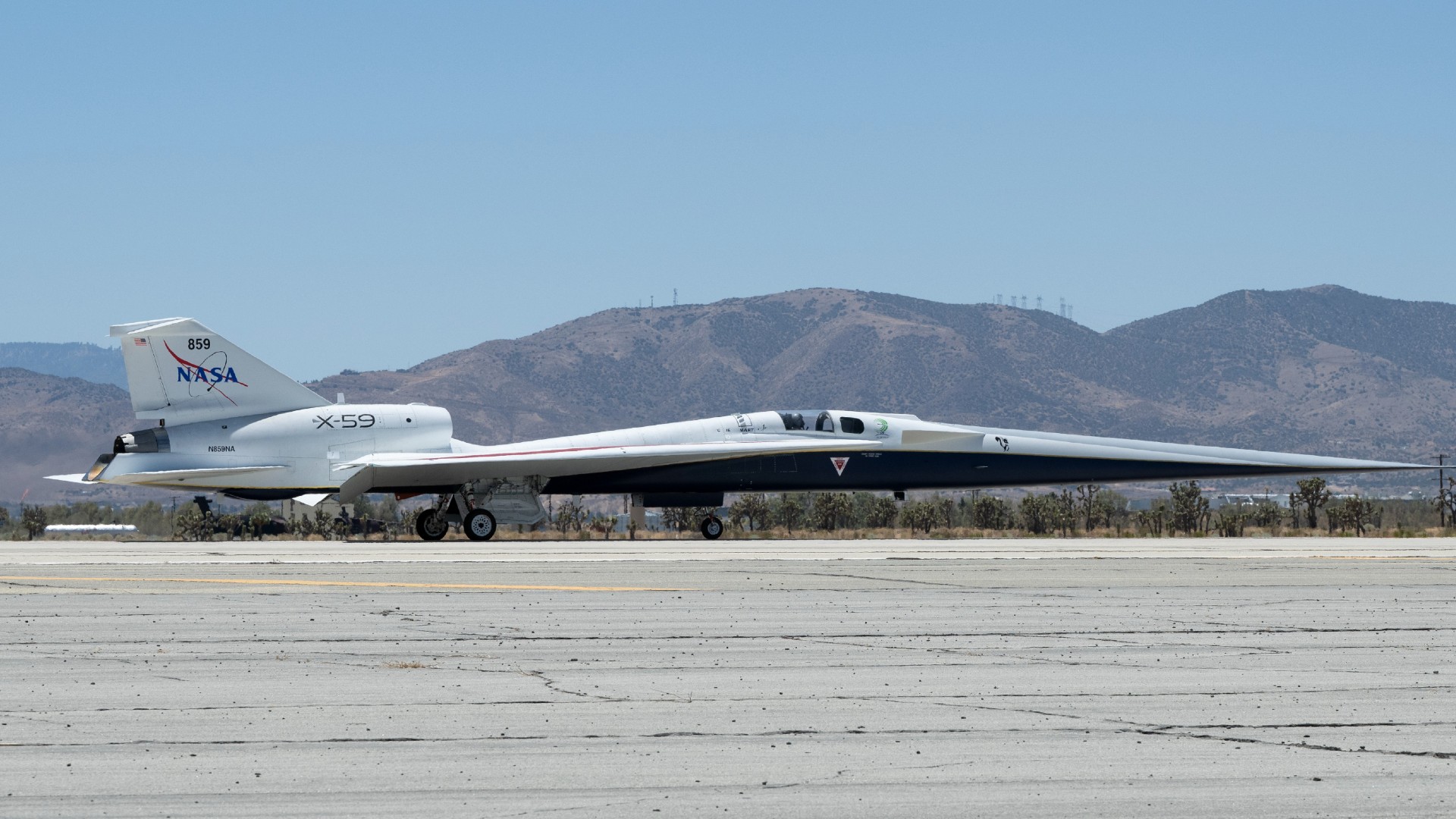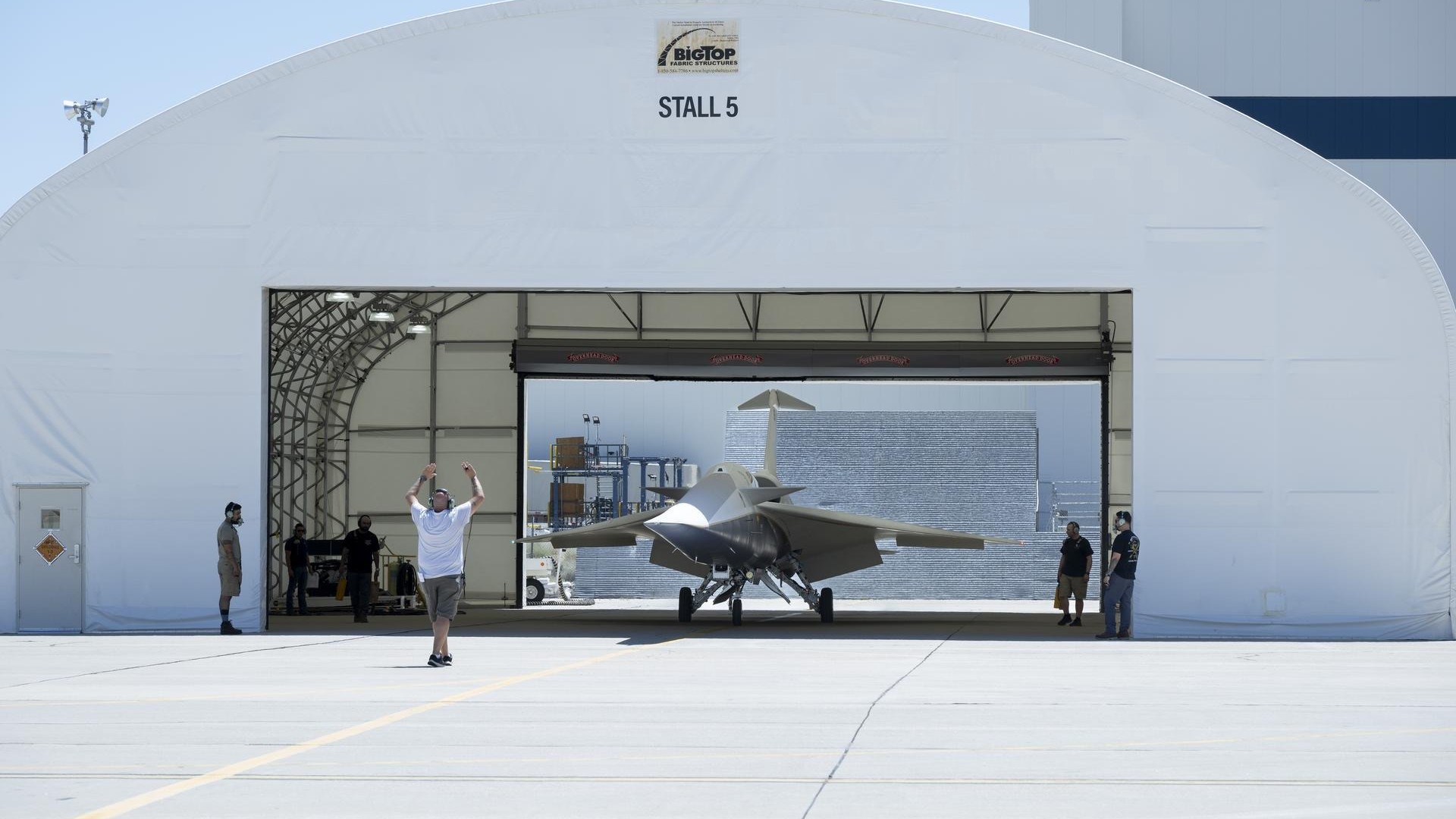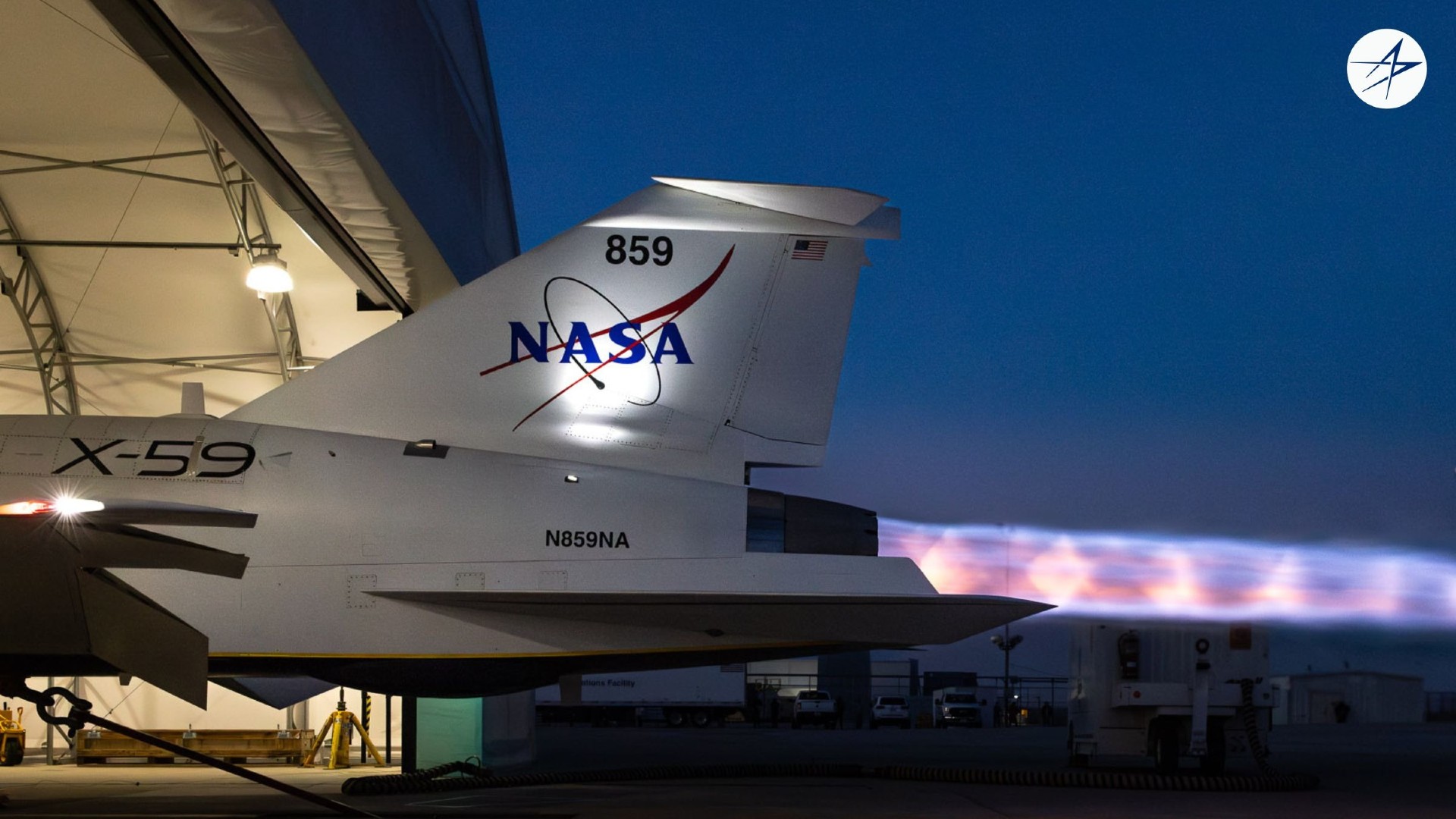NASA's X-59 'quiet' supersonic jet rolls out for its 1st test drive (video)
The aircraft is undergoing its final round of tests before it finally takes to the sky for the first time.
NASA's X-59 "quiet" supersonic jet continues to make its way toward the runway.
The X-59 was designed from the ground up to fly faster than the speed of sound without generating the thunderous sonic booms typically associated with supersonic flight. The 99-foot (30-meter) aircraft features a radical elongated design, which eliminates a front windscreen; pilots instead see what's ahead through an augmented reality-enabled closed circuit camera system that NASA calls the External Vision System, or XVS.
This month, NASA took the experimental aircraft out for a drive, performing what are known as taxi tests. During these tests, NASA test pilot Nils Larson drove the X-59 across a runway at low speeds so crews could ensure the jet's steering and braking systems work as intended. Next, NASA and Lockheed Martin will perform high-speed taxi tests in which the X-59 will accelerate to close to the speed at which it will take off.

Some ad blockers can disable our video player.
The taxi tests took place at the U.S. Air Force's Plant 42 facility in Palmdale, California. The Air Force and its contractors use the plant to manufacture and test classified aircraft; the X-59 is being developed by Lockheed Martin, whose legendary "Skunk Works" facility is found at Plant 42.
Some of the U.S. military's most advanced aircraft were developed to some extent at Plant 42, including the F-22 Raptor, the B-2 Spirit, and the uncrewed RQ-170 Sentinel spy drone.
NASA's recently-retired SOFIA airborne observatory aircraft, the "flying telescope," also called Plant 42 home. The agency's space shuttles, the world's first reusable spacecraft, were also assembled and tested at the facility.

These taxi tests are only the most recent tests that have taken place over the last several months. Earlier this month, NASA teamed up with the Japan Aerospace Exploration Agency (JAXA) to test a scale model of the X-59 in a supersonic wind tunnel in order to measure the noise produced beneath the aircraft.
Breaking space news, the latest updates on rocket launches, skywatching events and more!
Months prior, in May 2025, NASA fed data into the aircraft's computers that simulated being in flight, including experiencing failures. A month before that, NASA ran the X-59 through an "engine speed hold," similar to a car's cruise control, to ensure its engine can maintain a specific speed.
But 2025 began with the most photogenic of all: afterburner tests, during which extra fuel was injected into the aircraft's hot exhaust.

If the X-59's upcoming tests continue to be successful, NASA will soon conduct a flight test campaign that will see the jet fly over selected populated areas to collect data on how the aircraft's quieter sonic "thumps" are perceived on the ground.
The ultimate goal is to develop technologies that can help bring supersonic flight back to the continental United States. Commercial supersonic flight has been banned for decades because of how disruptive the associated sonic booms can be.
If the X-59 and other supersonic aircraft can find ways to mitigate these loud sonic booms, supersonic flight could indeed return, greatly reducing flight times for civilian travel, disaster response, medical transport and other applications.

Brett is curious about emerging aerospace technologies, alternative launch concepts, military space developments and uncrewed aircraft systems. Brett's work has appeared on Scientific American, The War Zone, Popular Science, the History Channel, Science Discovery and more. Brett has English degrees from Clemson University and the University of North Carolina at Charlotte. In his free time, Brett enjoys skywatching throughout the dark skies of the Appalachian mountains.
You must confirm your public display name before commenting
Please logout and then login again, you will then be prompted to enter your display name.
